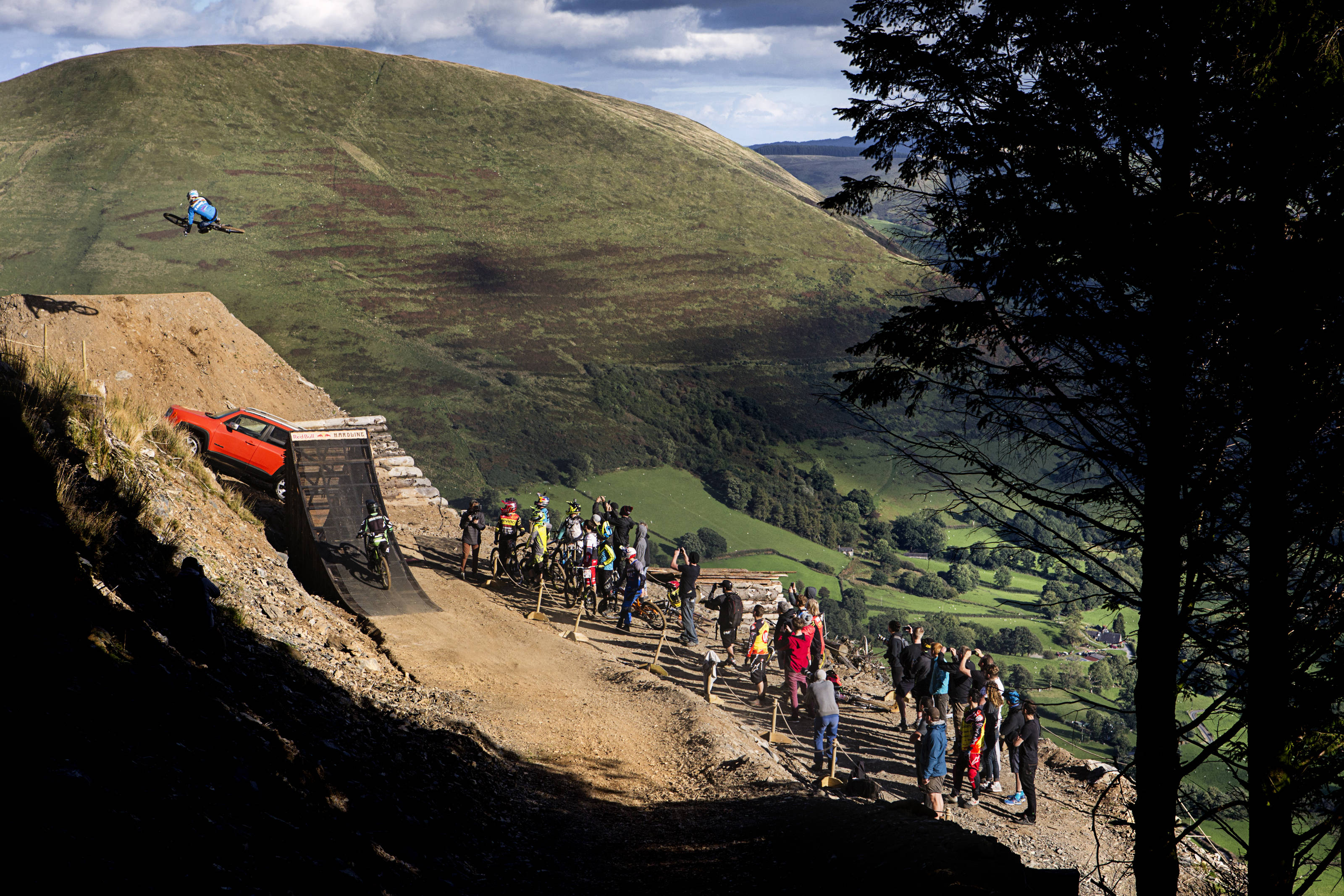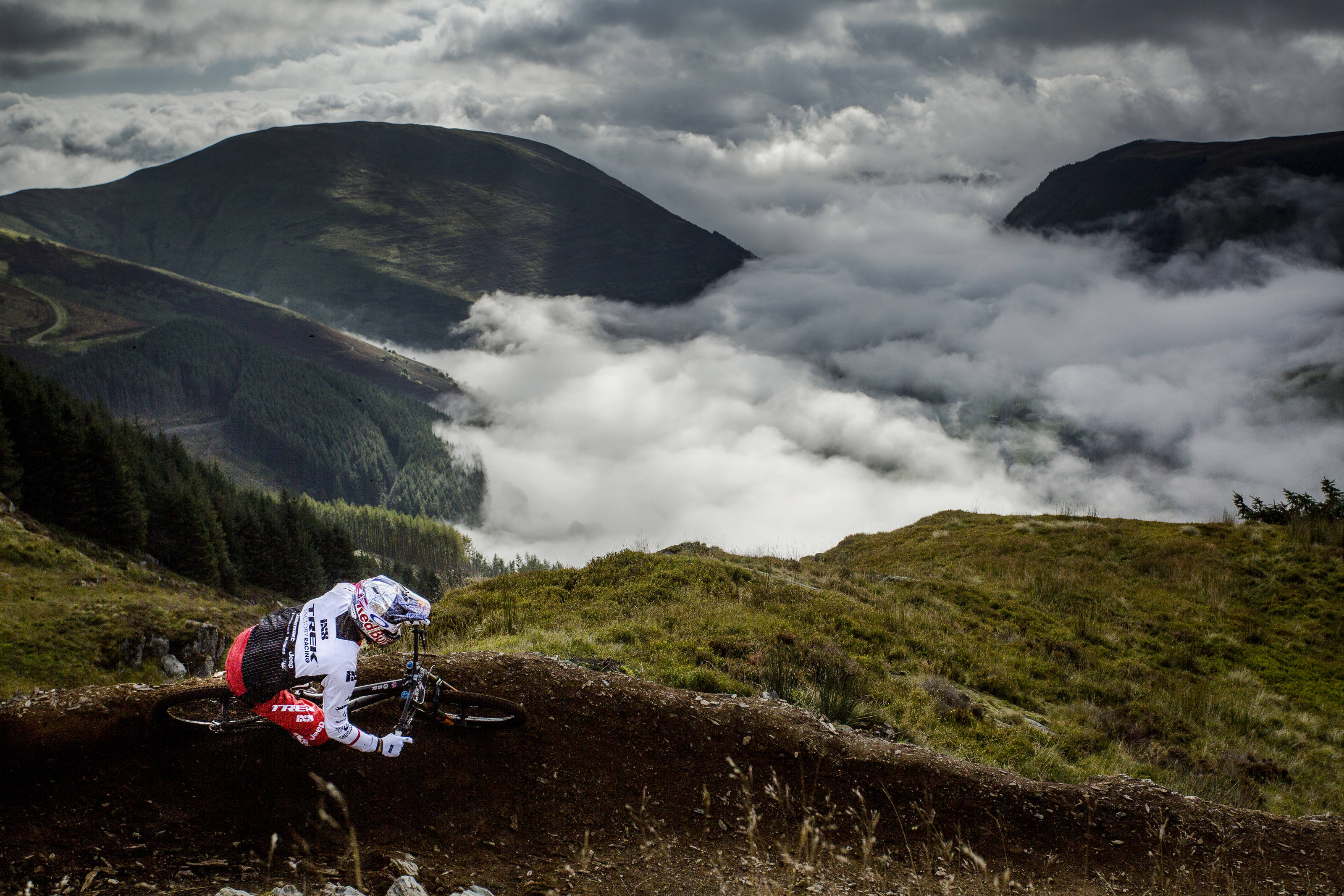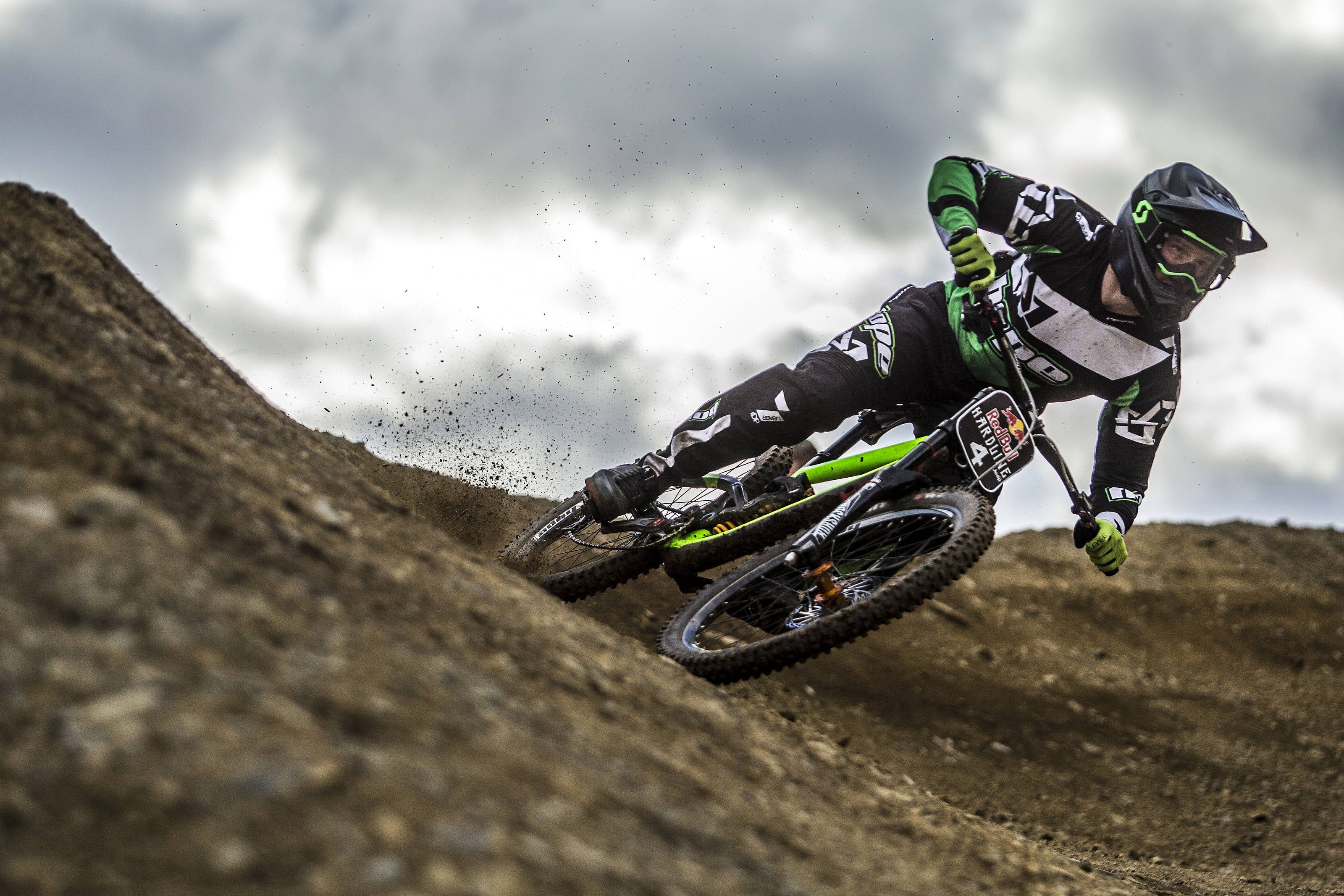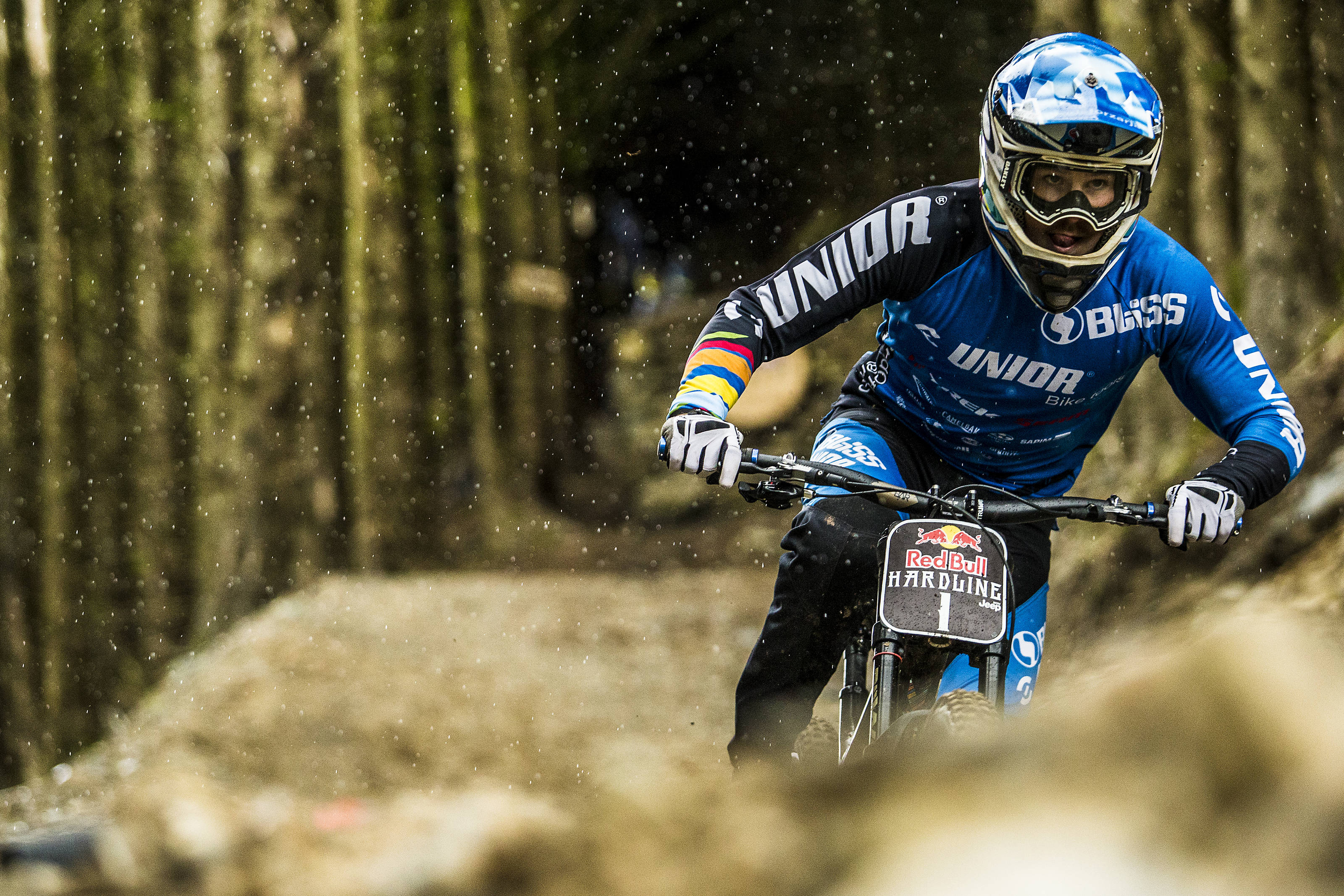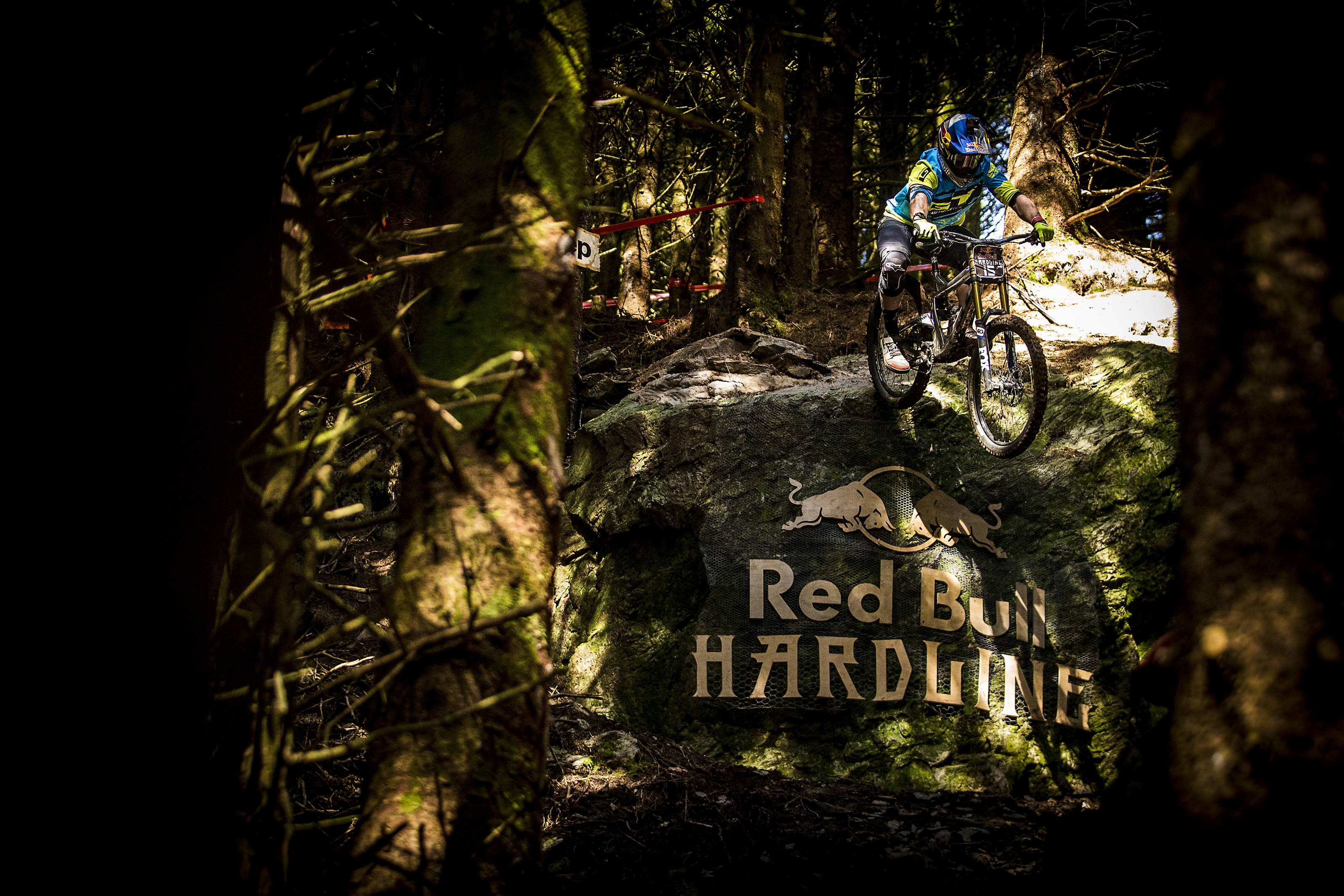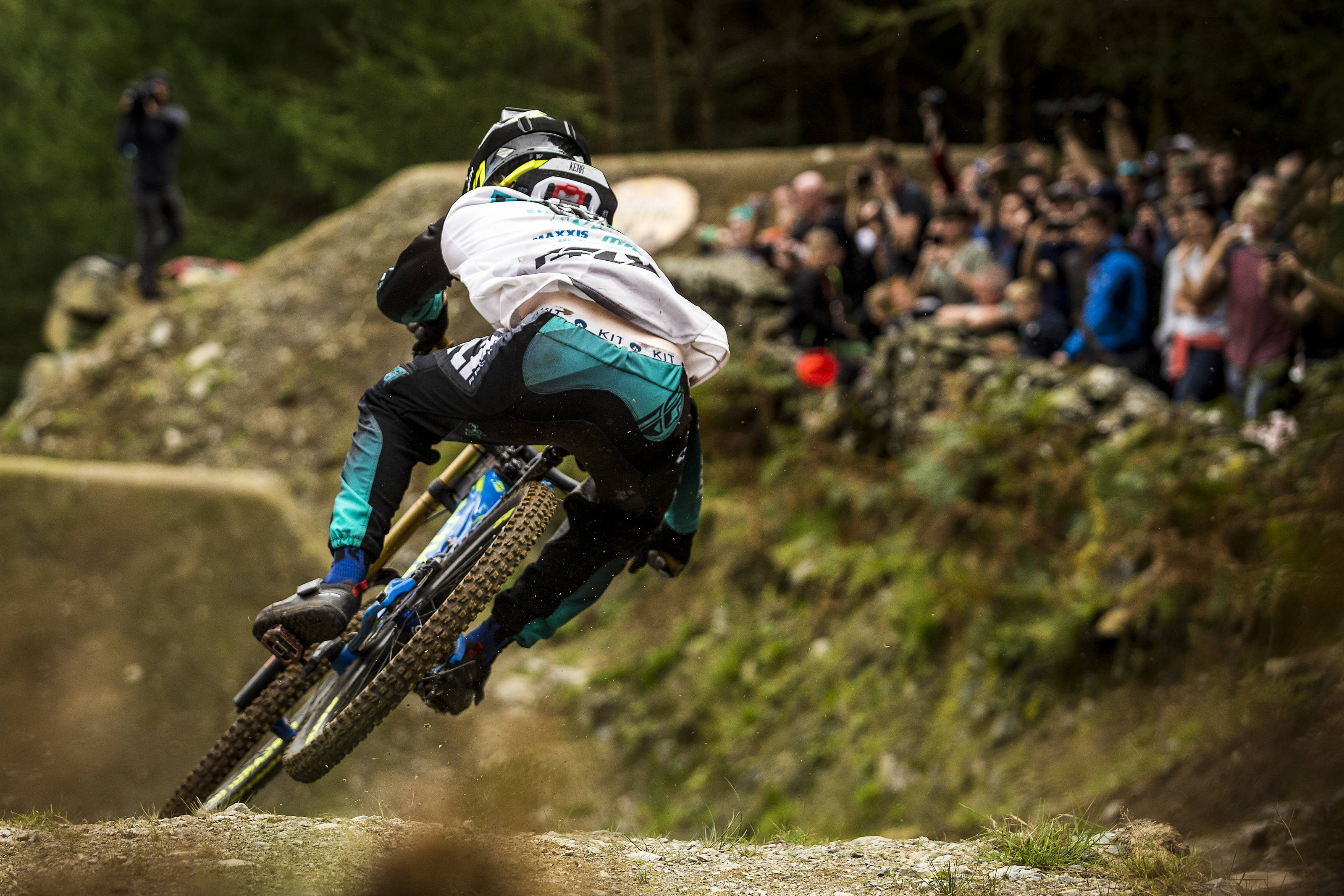One look at Gee Atherton flowing through the Red Bull Hardline course in the Dyfi valley in Wales and it’s clear to see why they call it one of the toughest tracks ever created. Run of the mill is not the Atherton’s style.
“A lot of the course is much bigger this year,” Gee tells us. “We’ve taken some of the best riders around and stuck them on one of the hardest courses in the world. It’s quite the combination.”
The world watches on as the two-time World Champion drops off a boulder into murky woodlands where light barely breaks through the trees, zips round a couple of rugged corners and navigates a stretch of rocks and roots perilous enough to cause the best of riders problems.
And yet because of what comes next, nobody takes much notice of the finesse with which Gee has just sailed through that section. See, waiting a few hundred metres down the trail is something rather more unique. As Gee’s brother Dan Atherton, the brains behind the build, puts it; what’s waiting is basically a “great big metal ramp”.
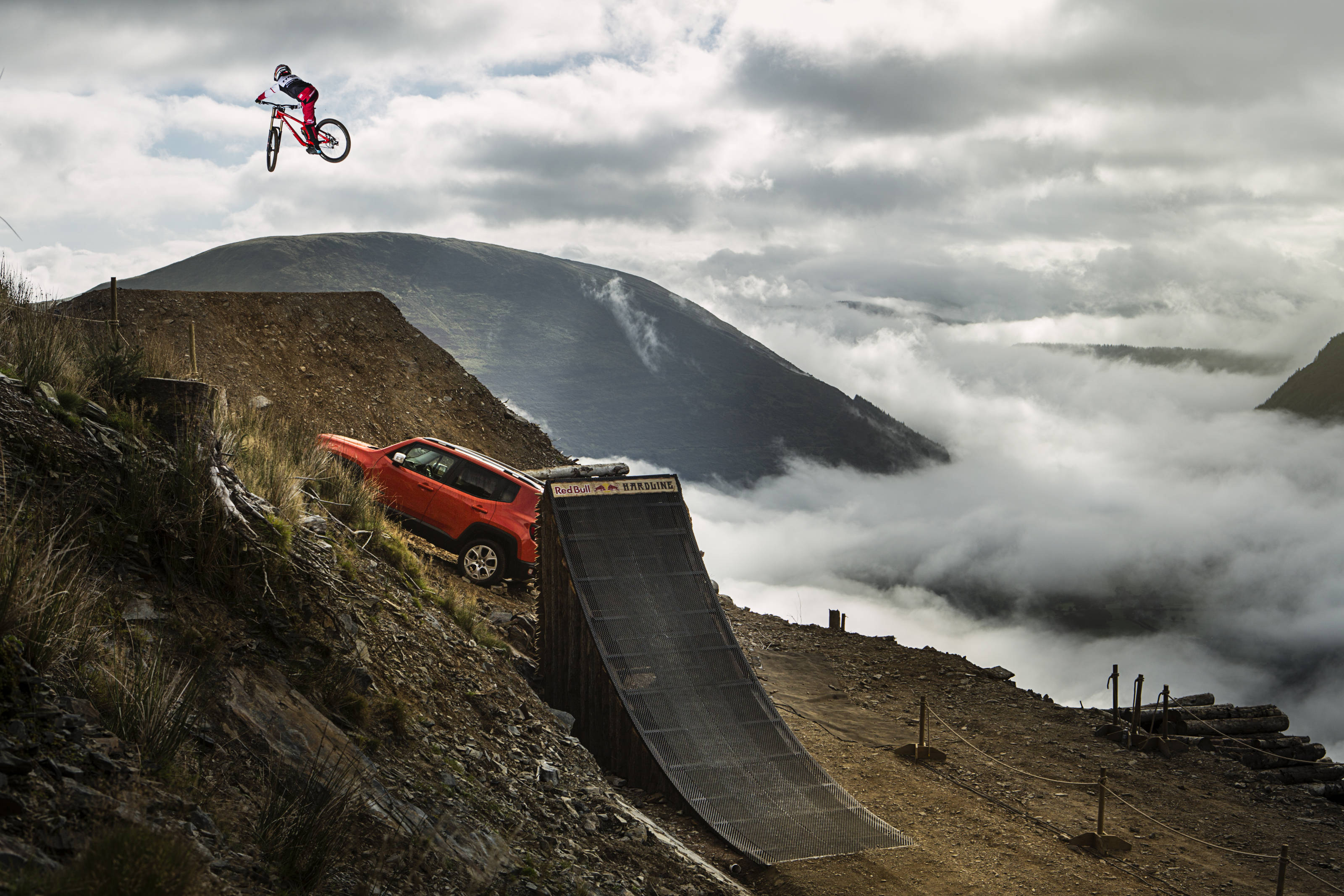
Set up on one of the most exposed parts of the Dyfi hillside is the Renegade Step-Up, a huge jump with a steep lip that flings riders up to hang high over the 40ft gap before meeting the landing pad on the other side, and only after they’ve been spat out of the woods before at around 40mph.

